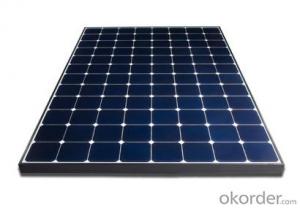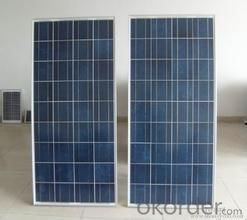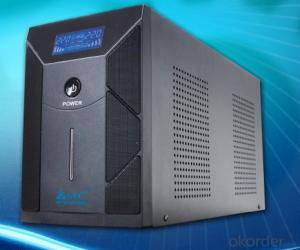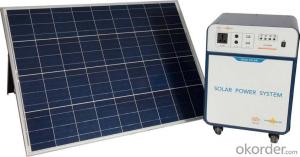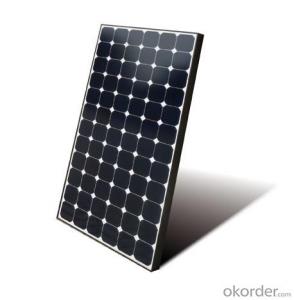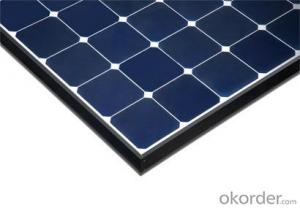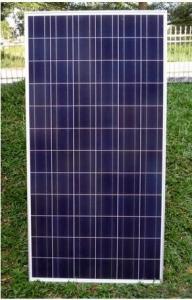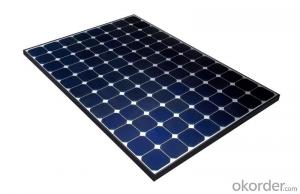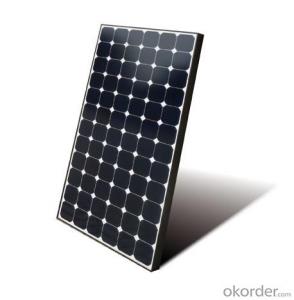Affordable Solar Energy Systems:CNBM On-Grid System 10kW with Certificate UL, TUV, CE
- Loading Port:
- Shanghai
- Payment Terms:
- TT OR LC
- Min Order Qty:
- 100 watt
- Supply Capability:
- 1000 watt/month
OKorder Service Pledge
OKorder Financial Service
You Might Also Like
Specification
CNBM On Grid System 10KW with Certificate UL TUV CE
Product description
They range from small residential and commercial rooftop systems to large utility-scale solar power stations. Unlike stand-alone power systems, a grid-connected system rarely includes an integrated battery solution, as they are still very expensive. When conditions are right, the grid-connected PV system supplies the excess power, beyond consumption by the connected load, to the utility grid.
Connection of the photovoltaic power system can be done only through an interconnection agreement between the consumer and the utility company. The agreement details the various safety standards to be followed during the connection.[4]
Bypass diodes may be incorporated or used externally, in case of partial module shading, to maximize the output of module sections still illuminated.Systems such as Net Metering and Feed-in Tariff which are offered by some system operators, can offset a customers electricity usage costs. In some locations though, grid technologies cannot cope with distributed generation feeding into the grid, so the export of surplus electricity is not possible and that surplus is earthed.
Grid-connected PV systems are comparatively easier to install as they do not require a battery system.[1][6]
Grid interconnection of photovoltaic (PV) power generation systems has the advantage of effective utilization of generated power because there are no storage losses involved.[7]
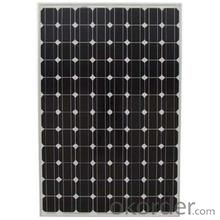
Application
Industrial
Commercial
Residential
Feature
Residential, grid-connected rooftop systems which have a capacity more than 10 kilowatts can meet the load of most consumers.[2] They can feed excess power to the grid where it is consumed by other users. The feedback is done through a meter to monitor power transferred. Photovoltaic wattage may be less than average consumption, in which case the consumer will continue to purchase grid energy, but a lesser amount than previously. If photovoltaic wattage substantially exceeds average consumption, the energy produced by the panels will be much in excess of the demand. In this case, the excess power can yield revenue by selling it to the grid. Depending on their agreement with their local grid energy company, the consumer only needs to pay the cost of electricity consumed less the value of electricity generated. This will be a negative number if more electricity is generated than consumed.[3] Additionally, in some cases, cash incentives are paid from the grid operator to the consumer.
Packaging
With carton and box
- Q: How do solar energy systems affect the demand for traditional energy sources?
- Solar energy systems can significantly reduce the demand for traditional energy sources by providing a clean and renewable alternative. As more solar energy systems are installed and utilized, the reliance on fossil fuels and other traditional energy sources decreases, resulting in a reduced demand for these conventional energy sources.
- Q: Can solar energy systems be used for industrial process heat?
- Yes, solar energy systems can be used for industrial process heat. Solar thermal technologies, such as concentrated solar power (CSP) and solar water heating systems, can provide high-temperature heat suitable for industrial processes. These systems use the sun's energy to generate steam or heat transfer fluids, which can then be used in various industrial applications like drying, sterilization, or even powering turbines for electricity generation. By harnessing the abundant and renewable solar resource, industrial sectors can reduce their dependence on fossil fuels and decrease their carbon emissions.
- Q: Can solar energy systems be used in areas with limited access to electricity?
- Yes, solar energy systems can be used in areas with limited access to electricity. In fact, solar energy is a viable solution for such areas as it does not require a connection to the traditional power grid. Solar panels can be installed on rooftops or open spaces to harness sunlight and convert it into electricity. This electricity can then be used to power various appliances and devices, providing a reliable and sustainable source of energy. Additionally, solar energy systems can be paired with energy storage systems, such as batteries, to store excess energy generated during the day for use during the night or on cloudy days. This ensures a continuous supply of electricity even in areas with limited sunlight. Moreover, solar energy systems can be cost-effective in the long run as they reduce dependence on expensive fossil fuels and help lower electricity bills. Overall, solar energy systems are a practical and efficient solution for areas with limited access to electricity, providing a clean and renewable source of power.
- Q: How much space do solar panels take up on a roof?
- The amount of space solar panels take up on a roof depends on the size and number of panels being installed. On average, a typical residential solar panel system can occupy anywhere between 100 to 400 square feet of roof space.
- Q: Can solar energy systems be used in powering disaster relief centers or emergency shelters?
- Yes, solar energy systems can be used effectively in powering disaster relief centers or emergency shelters. Solar panels can harness the sun's energy and convert it into electricity, providing a reliable and sustainable power source in areas where traditional power infrastructure may be damaged or unavailable. Solar energy systems can help ensure continuous power supply for lighting, charging communication devices, operating medical equipment, and other essential functions in disaster relief centers or emergency shelters. They offer a practical and eco-friendly solution for providing electricity during critical times.
- Q: Can solar energy systems be used for powering off-grid wildlife monitoring stations?
- Yes, solar energy systems can be used to power off-grid wildlife monitoring stations. Solar panels can generate electricity from sunlight, which can then be stored in batteries for use during periods of low or no sunlight. This makes solar energy a reliable and sustainable option for powering remote wildlife monitoring stations that are not connected to the electrical grid.
- Q: How do solar energy systems impact waste reduction?
- Solar energy systems have a positive impact on waste reduction as they generate electricity without producing any waste or emissions. This reduces the reliance on fossil fuels, which are responsible for significant waste in the form of greenhouse gas emissions and byproducts from extraction and combustion. Additionally, solar panels have a long lifespan, and at the end of their life, they can be recycled, further minimizing waste.
- Q: What is the role of solar energy systems in reducing reliance on fossil fuels?
- Solar energy systems play a crucial role in reducing reliance on fossil fuels by harnessing the power of the sun to generate clean and renewable electricity. By utilizing photovoltaic panels or solar thermal systems, solar energy can be converted into electricity or heat without any greenhouse gas emissions or air pollution. This shift towards solar energy helps to decrease the consumption of fossil fuels, which are major contributors to climate change and environmental degradation. Additionally, solar energy systems provide a sustainable and decentralized energy source, reducing the need for centralized power plants and transmission infrastructure. Overall, solar energy systems offer a viable solution to transition towards a more sustainable and fossil fuel-independent future.
- Q: How do solar energy systems affect the structural integrity of a building?
- Solar energy systems have minimal impact on the structural integrity of a building. These systems are usually lightweight and designed to be mounted on rooftops or integrated into existing structures. Proper installation and reinforcement measures ensure that the additional weight and stress are adequately supported, preventing any negative effects on the building's structure.
- Q: Can solar energy systems be installed in areas with heavy snowfall?
- Solar energy systems can indeed be installed in areas that experience heavy snowfall. However, it is crucial to consider the snow's effect on system performance and take necessary precautions during installation. Snow can temporarily decrease the amount of sunlight reaching the solar panels, thus reducing energy production. Nevertheless, the panels are designed with a tilt and smooth surface, enabling snow to easily slide off. Furthermore, technological advancements have resulted in the creation of snow-resistant solar panels that are highly efficient at converting sunlight into electricity even in snowy conditions. It is also worth mentioning that solar panels are often angled for optimal exposure to the sun, thereby minimizing snow buildup. Ultimately, while heavy snowfall may impact the efficiency of solar energy systems, they can still be effectively installed and contribute to renewable energy generation in areas with such weather conditions.
Send your message to us
Affordable Solar Energy Systems:CNBM On-Grid System 10kW with Certificate UL, TUV, CE
- Loading Port:
- Shanghai
- Payment Terms:
- TT OR LC
- Min Order Qty:
- 100 watt
- Supply Capability:
- 1000 watt/month
OKorder Service Pledge
OKorder Financial Service
Similar products
Hot products
Hot Searches
Related keywords
